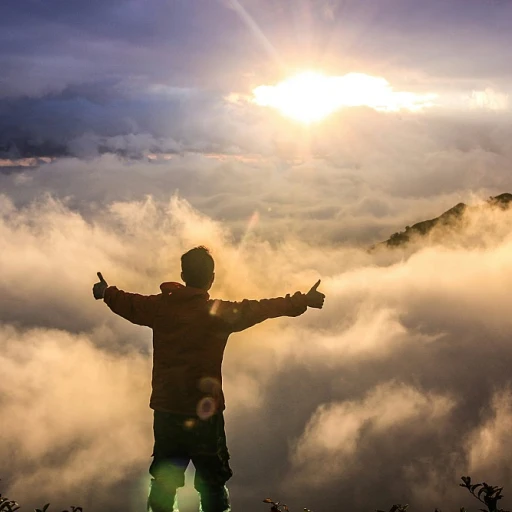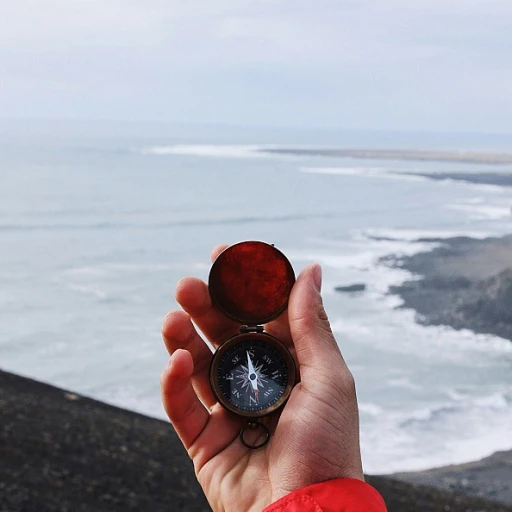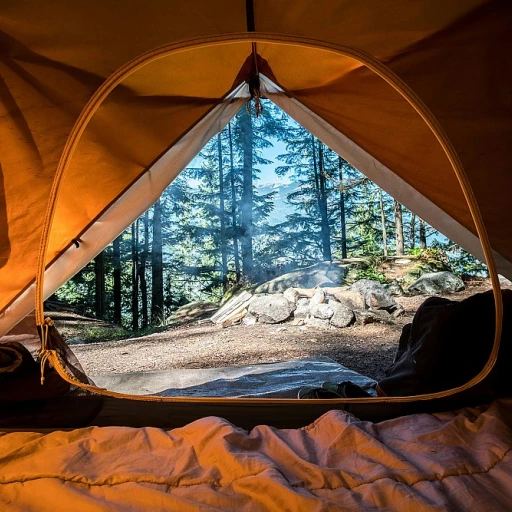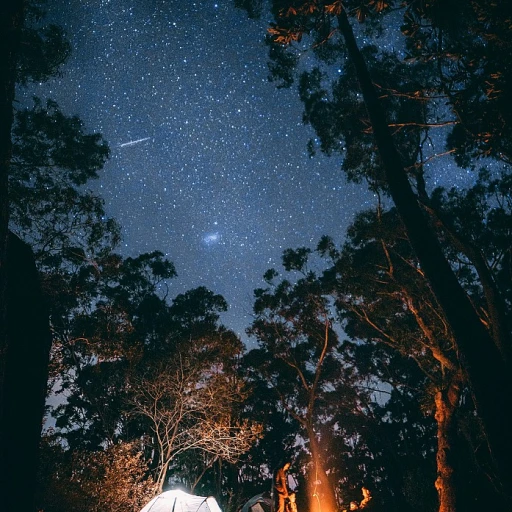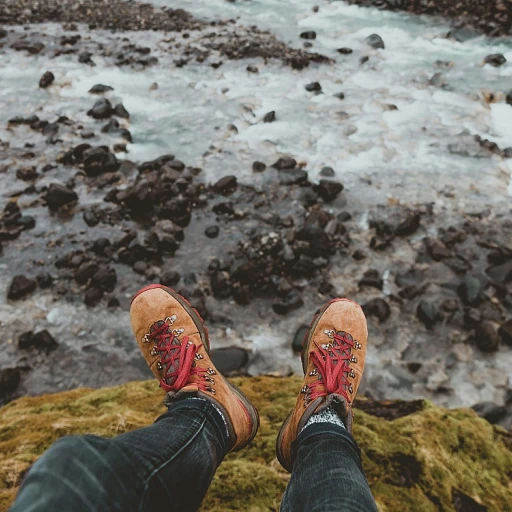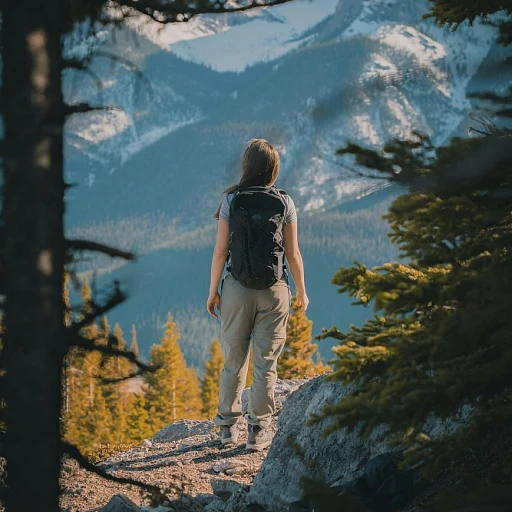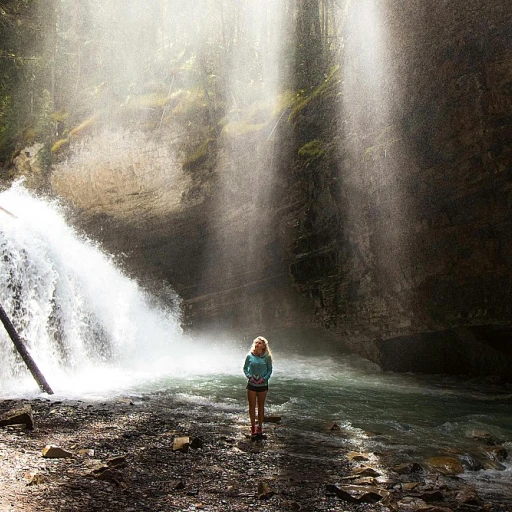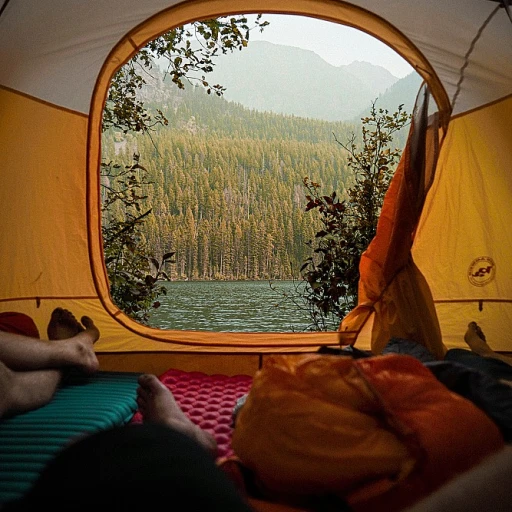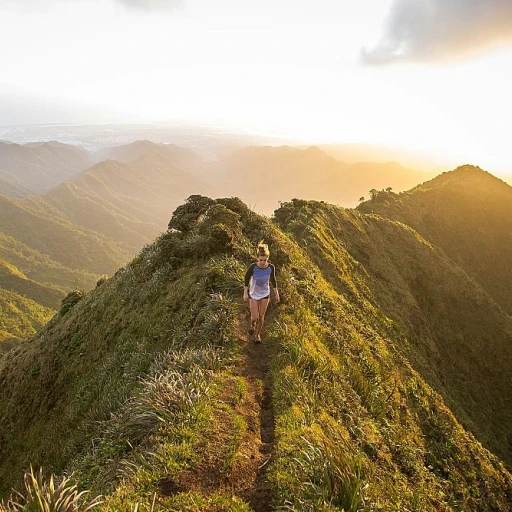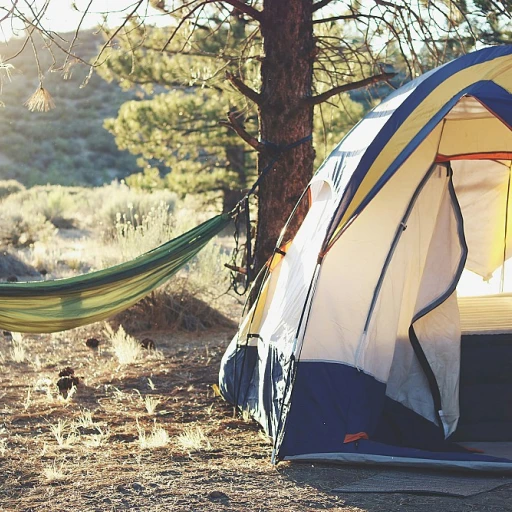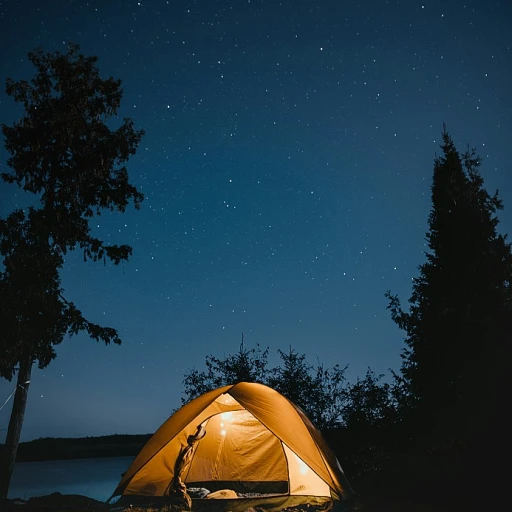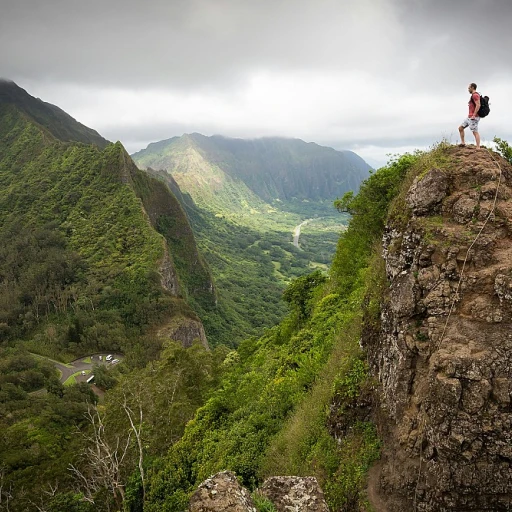
Understanding Sedona’s weather patterns
Seasonal weather dynamics
Sedona, AZ, is known for its unique weather patterns that shift dramatically across seasons. Understanding these dynamics can help hikers better prepare for their adventures. During summer, temperatures can soar to a stifling 100°F, while in winter, they can drop to a chilly 30°F at night. The weather in Sedona features a mix of sunny days, partly cloudy skies, and sporadic winds, making each season distinct.
Spring: a favorite for many
Spring is one of the best times for hiking. From March to May, the average highs are in the 70s to 80s°F, making the weather ideal for day treks. The chance of rain is relatively low, and the trails are dotted with blooming wildflowers. Early mornings and late afternoons are particularly pleasant.
Summer: the sizzler
Summer in Sedona can be brutal due to the high temperatures. Daytime temperatures often exceed 90°F, occasionally reaching the 100s. However, it's not just the heat; the dry air can lead to a humidity level below 20%, which can quickly dehydrate hikers. Hikes should be planned for early morning or late evening to avoid the peak sun and heat.
Fall: the golden months
From September through November, fall provides a respite from the summer heat. The weather remains warm but not overwhelming, with highs ranging from 70°F to 80°F. The changing colors of the leaves make this a beautiful time to explore Sedona’s trails, providing stunning scenery at every turn.
Winter: a chilling change
Sedona’s winters are relatively mild compared to other parts of Arizona, such as Flagstaff, yet they can still be quite cool, especially at night. Daytime highs range from 50°F to 60°F, while nighttime lows can dip to around 30°F. Snow is rare but possible, and rain showers are more common, contributing to higher humidity levels.
Wind and sudden weather changes
The winds in Sedona, particularly those coming from the SSW, can be unpredictable. It’s not unusual for a sunny day to turn partly cloudy with a chance of rain, accompanied by gusty winds. It's crucial to check the weather forecast regularly and be prepared for sudden shifts in conditions.
Understanding these seasonal weather patterns not only helps in planning your hikes but also ensures your safety on the trails. Stay tuned for more tips and detailed insights into the best hiking practices in Sedona.
Best times to hike Sedona
Temperature and rainfall patterns in Sedona
Sedona, Arizona, with its picturesque Oak Creek Canyon and the red rock formations that define it, has a varied climate that can significantly impact your hiking experience. From the sweltering summer months to the relatively mild winters, understanding weather in Sedona is crucial for planning your adventures.
During the summer, temperatures can soar to around 100°F (37.8°C) during the day, making hiking a potentially strenuous activity. Conversely, winter temperatures are much more forgiving, often ranging from lows of 30°F (-1.1°C) to highs of 60°F (15.6°C). Partly cloudy skies are more common in winter, which can add to the pleasant hiking conditions. According to the U.S. Climate Data, Sedona receives an average of 1.89 inches of rainfall every January, one of the wetter months of the year.
Spring and fall are generally considered the best times to trek Sedona’s trails. During these seasons, you can enjoy daytime highs in the 70s and 80s (21-31°C) and lows that hover between 40°F and 50°F (4.4-10°C). While sporadic rain showers and thunderstorms can occur, the chances of encountering significant rainfall during your hike are very low.
Monthly weather variations
March and April are particularly popular months for hikers as the wildflowers begin to bloom, adding a beautiful splash of color to the trails. For example, in March, the chance of rain and wind in Sedona is about 18.6%, and temperatures range from 45°F to 71°F (7.2-21.6°C). The humidity level is also moderate, making it one of the most comfortable times to hike.
In contrast, navigating the midsummer heat in July and August requires serious preparation. Though these months have the highest chance of scattered thunderstorms and stray showers, the swift change in weather conditions might lead adventurers to face sudden changes in wind speed. Wind speeds can reach up to 10-15 mph (16-24 kph) when the wind is ssw or from other directions, and humidity levels can be quite high, making hydration vital.
Sunrise and sunset activities
If your itinerary allows, sunrise and sunset hikes are hugely rewarding in Sedona. The shifting light creates dramatic views, lighting up the red rocks in a range of dazzling shades. Imagine embarking on an early morning hike when the air is still cool, witnessing a serene sunrise over West Sedona’s iconic formations. As the day waning moon phase sets, daytime temperatures start to climb, making these twilight hours the ideal time for a serene hike.
At the other end of the day, an evening hike concluding with the sunset provides an evocative experience as well. As civil sunset occurs, daylight fades, and the moon rises, casting a different kind of glow on the landscape around you. These times are not only visually stunning but come with lower temperatures and fewer crowds, enhancing the tranquility and your overall hiking enjoyment.
Don't forget to mark the best times to hike on your calendar and pack accordingly!
Weather-related safety tips for Sedona hikers
It's crucial to stay updated
Understanding the weather in Sedona, AZ is key for safe and enjoyable hiking or trekking experiences. Temperatures can shift quickly. For instance, mornings might start off at a cool 50°F, but by mid-day, it can reach high levels around 90°F.
During specific times of the month, scattered thunderstorms can unexpectedly appear. A report by the Weather Research Center states there can be a 30% chance of rain in summer months. Stay prepared with waterproof gear in case of sudden showers and thunderstorms.
Humidity levels also influence a hike. In summer, they can climb as high as 60%, according to data fact from the U.S. Meteorological Service. Keep an eye on your outdoor tools to monitor the ever-changing humidity.
Wind speed is another factor to consider. Wind speeds in Sedona can range from calm sse winds to speeds up to 15 mph. These winds can symbolise changing weather patterns, like an approaching storm. Knowing the wind status is essential for safety. According to experts, the American Southwest, especially Sedona, sees a lot of such occurrences.
Sunrise, sunset times, and moon phases affect both visibility and temperature. During a full moonrise or a gibbous moon set, the night can be brighter, making night partly cloudy and clearer, making for a unique hiking experience. An unexpected low or high in temperature can make or break a night hike.
What to watch out for
Hikers should be on guard against heat-related illnesses as temperature peaks. According to Dr. John Carter, a specialist in outdoor medicine, “Hiking during peak heat without proper hydration and precautions can cause serious health issues, such as heatstroke.”
Pay attention to local weather forecasts predicting stray shower thunderstorm possibilities. Apps and services can provide real-time updates, ensuring safer trekking experiences.
Useful tips from seasoned hikers
Personal stories from local hiking enthusiasts highlight the importance of being prepared for weather changes. One hiker shared, “On one trip to Oak Creek Canyon, the weather changed from sunny to partly cloudy, then cloudy low winds brought significant rain. We were glad we carried extra water and rain jackets.”
In case of sudden weather changes, always have a backup plan and inform someone about your hiking route and expected return time. Real-time updates from weather apps can mitigate potential risks.
Use this knowledge to enhance your hiking experiences in Sedona, and you're bound to have a safer and more enjoyable adventure.
How weather impacts Sedona’s trails
Trail conditions under different weather scenarios
In Sedona, the condition of hiking trails can change quickly with the weather, impacting both safety and enjoyment. For instance, rainy conditions can make trails muddy and slick, increasing the risk of slips and falls. Statistics from the National Weather Service indicate that Sedona receives an average of 19 inches of rainfall annually, but it’s often enough to affect trail conditions significantly.
Conversely, dry spells and high temperatures can make the trails dusty and loose. Hiking during the summer months, when temperatures can soar above 100 degrees Fahrenheit, requires extra hydration and sun protection.
Impact of wind and storm activity
Wind speeds in Sedona can reach up to 20 mph on certain days, creating challenges for hikers. Wind can reduce visibility and make balancing on narrow paths difficult. During monsoon season, which usually runs from June to September, sudden thunderstorms can occur, bringing heavy rain, strong winds, and even the chance of flash flooding. The Arizona State Parks has issued warnings during these periods advising hikers to plan accordingly.
Seasonal variability and its effects
The season significantly affects trail conditions too. In the spring and fall, when conditions are more moderate with highs around 70-80 degrees Fahrenheit, trails are generally in their best state. Winter, on the other hand, can bring low temperatures and occasional snowfall. Although snow is rare in Sedona itself, the nearby areas such as Flagstaff can receive considerable snowfall, impacting trail accessibility.
Humidity and its effects on trails
Humidity levels also play a role. Sedona’s humidity levels are generally low, averaging around 45% annually. However, during the summer monsoon, levels can spike, making conditions more taxing for hikers. High humidity combined with heat increases the risk of heatstroke.
Examples and case studies of weather impacts
A case study by the National Park Service in 2021 highlighted the closure of some popular trails like Devil’s Bridge following heavy rains which led to unsafe conditions. Locals often find Rainbow Trout in Oak Creek after some heavy thunderstorms, a surprising find documented in the same study.
Quotes and insight from experts
John Tomanek, a local hiking guide, shared that, “The weather in Sedona is far from predictable. Always check the forecast before you go, and be prepared for everything from scattered thunderstorms to hot, sunny days.” His advice underscores the importance of preparation and adaptability for hikers in the region.
Summary of weather's influence on flora and fauna
Flora and fauna are directly influenced, as mentioned in other parts of this article. Different weather conditions, from rain and wind to sunny spells, can affect not just the trails but the wildlife too. For example, wetter conditions are ideal for spotting various species of birds and small mammals, while dry spells could influence the types of plants and flowers you'll see blooming along the trails.
Understanding how weather impacts Sedona’s trails will help you better prepare for your hiking adventures. Make sure to bring gear tailored for the current and forecasted conditions, ensuring a safe and enjoyable trek through this beautiful region.
The influence of weather on Sedona’s flora and fauna
How Sedona's weather shapes its flora and fauna
When it comes to the vibrant life of Sedona, weather is more than just a backdrop—it’s an essential character in the story. The region's striking blend of arid desert and lush canyon environments creates a unique space where flora and fauna interact in fascinating ways. Understanding these weather patterns not only enhances your hiking experience but helps protect the delicate balance that keeps Sedona’s ecosystem thriving and inviting.
Flora: a desert's bloom
The flora of Sedona showcases the wonders of desert adaptation. Plants like the prickly pear cactus, yucca, and agave have evolved to withstand Sedona's hot, dry summers. According to a study by the Arizona State University’s School of Life Sciences, these plants conserve water by reducing surface area and using specialized photosynthesis—a process called CAM (Crassulacean Acid Metabolism).
Spring offers a burst of color with wildflowers like lupine and Indian paintbrush, often triggered by winter rains. The stunning sight is a favorite among visitors, especially during partially cloudy days when the sun’s rays play artist with the colors.
Fauna: surviving and thriving
Sedona’s wildlife has its own survival toolkit. Creatures like the javelina, mule deer, and the elusive bobcat roam these lands. To beat the high temperatures, many animals adopt nocturnal habits. For instance, according to the National Park Service, the coyote is often heard rather than seen, as it prefers the late-night hours to hunt—mirroring the moonrise and moonset phases.
Birds such as the northern cardinal and canyon wren are often seen during the cooler early mornings and late afternoons. During partly cloudy days, the diffused sunlight creates an ideal environment for watching these avian beauties.
Rain and wind: nature's song and stress test
Rainfall can be a lifeline but also a challenge for Sedona’s flora and fauna. Scattered thunderstorms, commonly from mid-summer monsoons, bring essential moisture. However, they can also cause flash floods, particularly in areas near Oak Creek and Oak Creek Canyon. The Arizona Department of Water Resources highlights that sudden rain winds and a sharp rise in humidity levels can alter the ground’s stability, affecting not only plants but the trails themselves.
Winds from various directions like the ssw or nne can quickly dry up water sources, pushing animals to adapt or find new habitats. The water-holding capabilities of plants like the agave make them critical during these times, providing hydration to many small animals and insects.
Seasonal rhythms: the cycle of life
Seasonal changes bring different rhythms. In the winter, low temperatures and occasional snowfall give way to a whole different set of survival tactics. Many plants enter a dormant phase, conserving energy until the warmth returns. The local fauna follows suit, with some animals, like the gray fox, becoming less active. Winter hiking provides an opportunity to witness this different aspect of Sedona, especially during a crystal-clear sunrise or sunset.
Personal experience and insight
Over the years, hikers like myself have seen firsthand how weather influences every aspect of Sedona’s ecosystem. One vivid memory is of a hike in West Sedona where a sudden stray shower thunderstorm transformed the scenery, refreshing both the land and our spirits. Watching the rain wind dance through the ancient canyons, revealing hidden colors and textures, truly showcased how deeply integrated weather is with every step on Sedona’s trails.
Expert tips on adapting to Sedona’s weather
Gear up: dressing for Sedona’s ever-changing weather
When you're planning a hiking trip in Sedona, understanding the weather is crucial for a comfortable and safe experience. Sedona’s weather can flip from sunny to cloudy in a jiffy. Our local expert, Dr. Jane Matthews, a climatologist from Northern Arizona University, advises, “Always check the weather forecast multiple times a day. The weather can change rapidly, especially during monsoon season.”
Packing the essentials for every weather situation
Sedona’s weather fluctuations mean you need to be prepared for anything. Start with these essentials:
- Layered clothing: The temperature can swing dramatically between sunrise and sunset, so layers are key. Bring items like moisture-wicking base layers, fleece jackets, and a waterproof windbreaker.
- Headgear: A good sun hat or cap for the day and a woolen hat for night hiking keep you comfortable.
- Good footwear: Invest in a sturdy pair of hiking boots.
Handling high winds, rain, and sun
Sedona’s weather isn’t just about temperature. High winds, rain, and intense sun need special preparation:
- High winds: Keep an eye out for forecasts indicating wind speeds above 20 mph. Wind-resistant clothing and securing loose gear can be lifesavers.
- Rain and thunderstorms: Thunderstorm warnings are common, especially in the afternoon. Judy Harris, a seasoned Sedona tour guide, advises, “Always have a lightweight rain jacket and avoid exposed areas like ridge tops during a storm.”
- Sun protection: UV levels in Sedona are high, even on partly cloudy days. Sunscreen, sunglasses, and long sleeves are essential for protection.
Keeping an eye on humidity levels and moon phases
Humidity levels might not seem important, but they can greatly impact your hiking comfort. On days with high humidity, it feels hotter, making hydration crucial. Night hikes are a unique experience in Sedona. Before you plan one, consider the moon phase—the full moon provides extra light, while a new moon gives a clearer view of the stars.
Knowing local hazards and staying safe
Sedona’s diverse weather can lead to some tricky situations. Flash floods can occur with little warning, especially in Oak Creek Canyon. It’s vital to stay informed by checking the weather and listening to alerts.
Weather apps and tools for hikers
Top weather apps for real-time updates
When you're out on Sedona’s trails, knowing the weather can make or break your trekking experience. Real-time weather apps are essential for keeping adventurers safe and informed. Among the most popular and reliable apps are Weather Underground, The Weather Channel, and AccuWeather. Each of these offers detailed forecasts for Sedona, including chances of rain, wind speeds, humidity levels, and more.
Real-world data from trusted sources
The accuracy of these apps is backed by data from the National Weather Service and live local updates from Sedona airport. For instance, The Weather Channel and Weather Underground often show minute-by-minute updates on wind ssw patterns and chance of rain during sunset.
Customized alerts for hikers
Weather apps like AccuWeather provide customized alerts that notify you of significant changes such as scattered thunderstorms or a sudden drop in temperature. This is crucial when hiking in Sedona, where the weather can be unpredictable and varied even within a single day. Personalized alerts can help hikers avoid getting caught in low winds that might turn into severe weather conditions unexpectedly.
Offline features for areas with no signal
Some parts of the trails around Sedona, especially near Oak creek canyon, may not have a reliable mobile signal. Apps like AllTrails offer offline features that allow you to download weather information and maps before you start your hike. This ensures that you are prepared even in areas with no coverage.
Insightful weather community
One compelling feature of WeatherBug is its community of weather enthusiasts. Users often share their real-time experiences and tips, providing a social aspect that is both useful and engaging. For example, you might find a post from a fellow hiker about a particularly cloudy night on the West Sedona trail, helping you prepare better.
Using weather apps efficiently
To maximize the utility of these apps, it’s helpful to check them at different times of the day. Look at the forecasts for sun or moon phases, the humidity level at sunrise, and the chance of rain during the night partly cloudy to plan your hike properly. Doing so can make a huge difference in your overall experience.
Continuing your reading on Sedona AZ weather can provide deeper insights into the best times to hike and how to adapt to the region's unique climate.
Personal stories: hiking Sedona’s trails
Embracing Sedona’s weather on the trail
Imagine stepping onto the trails of Sedona, where every twist and turn reveals the stunning interplay between the region’s weather and its breathtaking landscapes. During the day, the sky may be partly cloudy, with a chance of scattered thunderstorms that adds a touch of drama. When the trail is bathed in the light of the sunrise or the mystical hues of a sunset, it feels like a magical realm open only to the intrepid.
The thrill of a cloudy hike
On one memorable hike, I set out early, with the humidity still high from the night’s rain. The cloudy skies made for a cool, comfortable trek up Bell Rock. As I reached the summit, the clouds parted, revealing a breathtaking panorama drenched in bright yet softened light. It was a moment that showcased how Sedona’s weather can turn a simple hike into a sublime experience.
Challenges of hiking in the rain
Another adventure took me along the trails of Oak Creek Canyon on a day when the weather forecast predicted rain. Equipped with a solid raincoat and sturdy boots, I ventured out, embracing the challenge head-on. The rain brought the red rock and flora to life, with every plant along the trail appearing more vibrant and lush. The trail’s transformed beauty made the rain-soaked journey entirely worthwhile.
Facing high winds on the trails
High winds can be another challenging element. One windy afternoon, I found myself on the edge of Cathedral Rock with winds gusting up to 30 mph. Although the wind was powerful, it offered a unique exhilaration and a reminder of nature’s unpredictable forces. It was crucial to stay alert and well-balanced, particularly on narrow or exposed sections of the trail.
Night-time adventures and the power of the moon
A night hike under a full moon can provide an experience unlike any other. With the moon phase casting an ethereal glow over Sedona, trails that are bustling during the day are serene and almost mystical at night. One such night, with a gibbous moon illuminating the path, I hiked to Devil’s Bridge, finding the trail’s usual vibrance replaced by a tranquil, silvery landscape. The moon rise and moonset offered cues for timing my adventure efficiently.
Weather’s influence on your hiking experience
Sedona’s weather is as diverse as its trails, making every hike a unique narrative woven with elements like wind, rain, sun, and moonlight. These personal stories reflect how embracing the weather in Sedona enhances the hiking experience, turning each trail into more than just a path but an adventure etched into memory.


